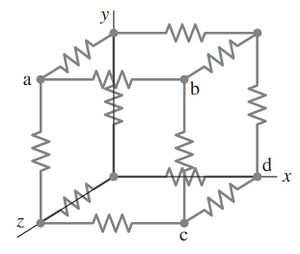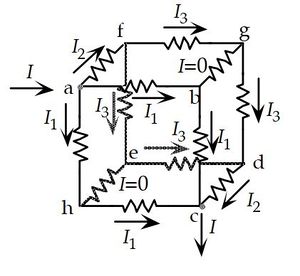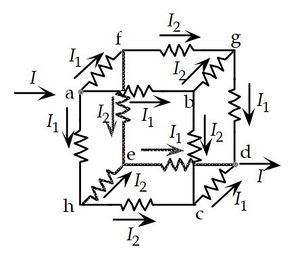Problem
Twelve resistors, each of resistance R, are connected as the edges of a cube. Determine the equivalent resistance
(a) between points a and b, the ends of a side;
(b) between points a and c, the ends of a face diagonal;
(c) between points a and d, the ends of the volume diagonal.
[Hint: Apply an emf and determine currents; use symmetry at junctions.]
solution
(a)
Insert a probe battery between points (a) and (b). Let's label the current drawn from this probe battery as I
This setup has a symmetry plane between abed, so the current split at junction a will be 
Another symmetry is that the afhe plane is the mirror cdgb (since one has the current I entering, and the other has the current leaving) thus we have the same currents in erverse directions in those planes.
The 6 equations in the symmetry reduced cube is:






6 equations and 6 unknowns, so we start solving:
 (2 and 6 in 1)
(2 and 6 in 1) (2 and 6 in 4)
(2 and 6 in 4) (3 in 5)
(3 in 5)
 ( solution of 3)
( solution of 3)
 (previous into 2)
(previous into 2)
 (previous into 1)
(previous into 1)

(b)
Insert a probe battery between points (a) and (c). Let's label the current drawn from this probe battery as I
This ehgh is a symmetry plane
(c)
Insert a probe battery between points (a) and (d). Let's label the current drawn from this probe battery as I

















